2017 Gene Technology / Genetic Testing Industry Venture Report
Based on the high accuracy of second-generation sequencing and the extremely low false positive rate, the heat of gene detection has been rising in recent years. In July of this year, China's genetic testing giant Huada Gene was listed, and it ushered in 19 consecutive daily limits. The attention of genetic testing is evident. In August, Novartis's gene therapy for B-cell leukemia, CAR-T, was approved by the US FDA. It is widely believed in the industry that this precise treatment through genetic modification will bring about major breakthroughs in the treatment of other cancers. The genetic technology industry is concerned about the heat.
However, what is the status quo of the genetic technology industry as the darling of public opinion in China? What kind of model will the industry leader bring? What are the opportunities and pits for venture capital? The Hunting Cloud Research Institute will discuss the specific situation of China's genetic technology industry and the development trend of the future industry from the aspects of industry driving force, status quo, major enterprises, investment trends and suggestions, and provide reference for venture capital.
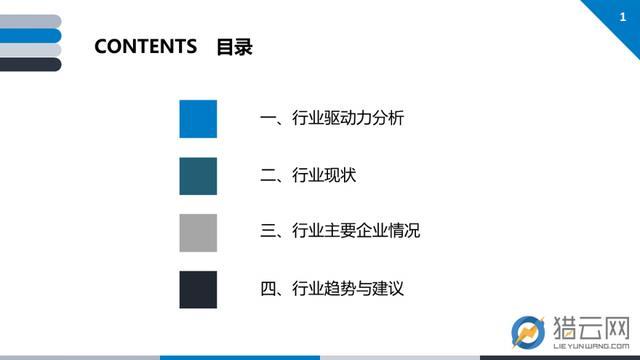
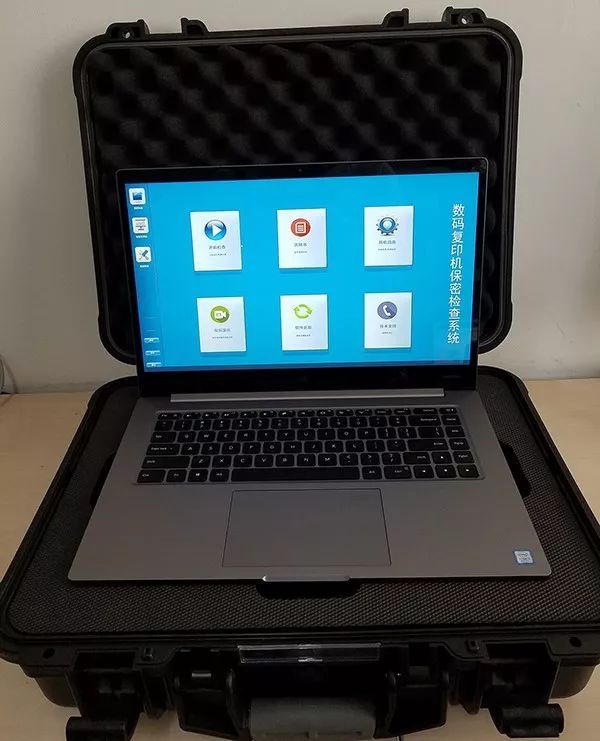

As a key innovation in medical development, genetic testing has issued several important policies in recent years to raise the industry to a national strategic position.
The following are the main policy indicators for genetic testing in China from 2015 to the present:
July 2015 “Notice on Implementing Major Engineering Packages for Emerging Industriesâ€: “Fast advancement of clinical application of genetic testing and localization of reagents for genetic testing instruments, focusing on genetic screening for genetic diseases and birth defects, and promoting advanced genetic testing Health technology is popular for the benefit of the people."
The March 13th Draft of the 13th Five-Year Plan: Genomics is included in 100 major projects and projects planned for implementation in the next five years.
In July 2016, the “13th Five-Year National Science and Technology Innovation Planâ€: “focus on the key technologies of precision medical core such as next-generation gene sequencing technology, omics research and big data fusion analysis technology, and develop a number of early screening for major diseases, Accurate application solutions and decision support systems for molecular typing, individualized treatment, efficacy prediction and monitoring."
January 2017 "13th Five-Year Plan for Biological Industry Development": The genetic testing capacity (including pre-pregnancy, prenatal, and neonatal) covers more than 50% of the birth population.
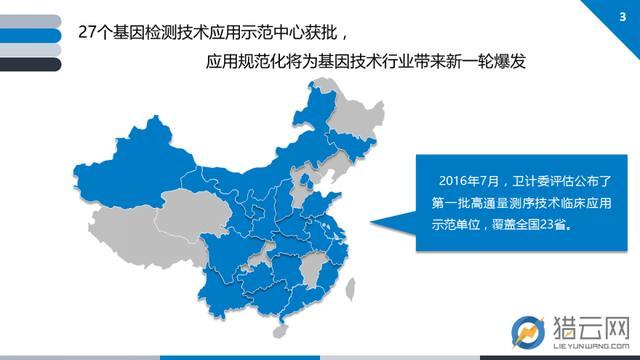
In July 2016, the Health Planning Commission evaluated and published the first batch of clinical application demonstration units for high-throughput sequencing technology, covering 23 provinces nationwide. According to the document, the clinical application pilot is divided into three majors, namely genetic disease diagnosis, prenatal screening and diagnosis, and preimplantation embryo genetic diagnosis.
This open genetic sequencing pilot is the first time in February 2014 that the genetic testing has been open to the country for a large-scale opening policy after the industry has been completely stopped. The industry will be more standardized under supervision. The Hunting Cloud Research Institute believes that policy opening and industry standardization will prompt the genetic industry to usher in a new round of outbreaks.

In addition to favorable policies, the continuous development of genetic testing technology has also driven the large-scale commercialization of genetic testing.
In the context of the increasingly sophisticated sequencing technology of 2001, genome-wide sequencing requires nearly $100 million. In the context of the fourth generation of nanopore sequencing invented in 2014, but the second generation of sequencing is still the mainstream, the cost of whole genome sequencing has dropped to $1,000. The average price of the existing gene sequencing market is 3,000 yuan. It is estimated that in the next decade, as the technology is upgraded again, the market price will drop to 600 yuan, and then the genetic testing will have more users and wider applications.
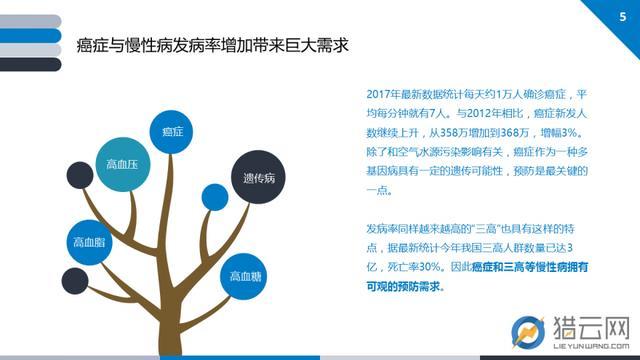
The main application scenarios of genetic technology in medicine include reproductive health testing represented by prenatal screening, complex disease gene services represented by cancer and chronic diseases, basic research, and drug development. The opening of the second-child policy has brought huge demand for reproductive health, and the complex diseases have a larger base population as the incidence rate increases year by year.
The latest statistics for 2017 are about 10,000 people diagnosed with cancer every day, with an average of 7 people per minute. Compared with 2012, the number of new cancers jumped from 3.58 million to 3.68 million, an increase of 3%. In addition to the impact of air pollution, cancer has a certain genetic possibility as a polygenic disease, and prevention is the most critical point. The "three highs" with the same high incidence rate also have such characteristics. According to the latest statistics, the number of three high-level people in China has reached 300 million this year, and the death rate is 30%. As a result, the nationals have considerable preventive and therapeutic needs for cancer and three high-grade chronic diseases. As a result, the market for genetic technology applications has increased significantly.


The genetic testing industry chain consists of upstream instrument and reagent manufacturers, midstream genetic testing service providers, and downstream patients, hospitals, and pharmaceutical companies.
In the upstream field, Illumina, a foreign genetic testing instrument developer, has long been in a monopoly position. In 2016, the company's market share has reached 86%, and the second-ranked Roche Roche market share has been further compressed. Among the 157 gene sequencing companies approved in China, only 4% of the self-developed gene sequencers are self-developed. Currently, only the Huada gene is competitive. Other companies cooperate with foreign companies to develop equipment or Directly use its equipment for testing.

In the midstream genetic testing service, in the 1990s, China's first genetic sequencing companies, led by Huada Gene, mainly provided genome sequencing services for research institutions. This service has also become the main cause of Huada Gene for more than ten years. Source of income. Subsequently, based on the data accumulated by genome sequencing, prenatal screening, genetic screening for early screening of cancer, and drug molecular screening techniques are emerging. At the national level in China, we have also intensively launched relevant technology pilots to enable the implementation of fine-grained application of genetic technology.
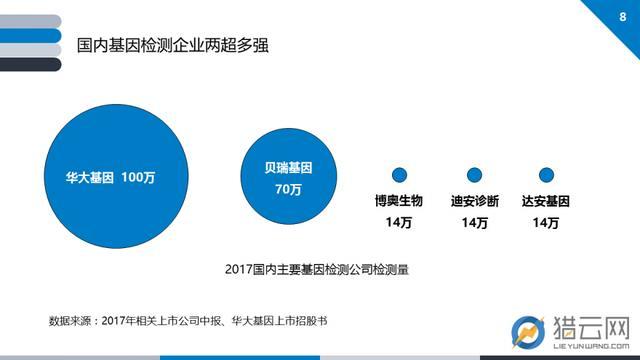
There are currently more than 200 domestic genetic testing service related enterprises, mainly distributed in the north and the depths. Among them, Huada Gene and Berry Gene (Berry and Kang) are far ahead, with a total of 1 million and 700,000 detections. The market share of Boao Bio, Dean Diagnostics, Daan Gene and other strong companies in the industry is not as good as that of Beihe Ruikang. The genetic testing industry has shown two super-strong trends.

Good doctor online about the "gene detection" consulting record shows that genetic testing began to surge in demand in 2016. The number of demanded people will increase steadily in the future with a growth rate of 20%-25%. The Hunting Cloud Research Institute estimates that the number of genetic testing users will reach 2 million this year, and by 2020, the demand for genetic testing will reach 3.5 million.
At present, the genetic testing and cancer genetic testing price with the highest demand for genetic testing is between 2,000 yuan and tens of thousands of yuan. Considering that the cost of genetic testing will be further reduced, the average price of 3,000 yuan will be exceeded. Billion mark.


The development of genetic testing has been for many years, and the industry leaders at home and abroad have begun to appear. They are best known for 23andME and Huada Gene.
In 2017, 23andME, which has the world's largest genetic database, received $250 million in financing from Sequoia Capital, with a total financing of $480 million and a valuation of $1.5 billion. In addition to traditionally relying on price cuts to attract users , 23andME has also cooperated with well-known online educational institutions to popularize knowledge about genetic testing. As can be seen from the above figure, after using the online education fan economy in 2011, the 23andME test volume exploded exponentially.
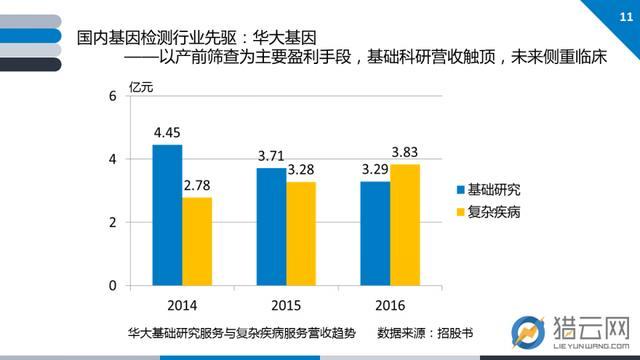
Founded in 1998, Huada Gene is the leading company in China's gene sequencing industry. It was listed on July 14 this year. From August 4th, Huada Gene received 19 daily limit.
The rapid development of Huada's genes mainly depends on three factors:
1. Scientific research influence : At the beginning of the establishment, we cooperated to complete the genetic sequencing of major projects such as the Human Genome Project in China, and published papers in "Nature" and "Science" several times to rapidly increase the influence.
2, the integration of new technology : 18 years of technical exchanges with foreign countries, learn from each other.
3. Business layout : The prospectus shows that the main source of income at the beginning of the establishment of Huada was the peak of basic research services in 2014. However, the multi-point layout of Huada made it a major positive after the second-child policy was opened. 2016 Huada's pre-production screening revenue reached 56%. The market revenue of complex diseases and services represented by cancer is also increasing year by year. Huada Gene's business diversification helps its revenue drivers continue to grow.
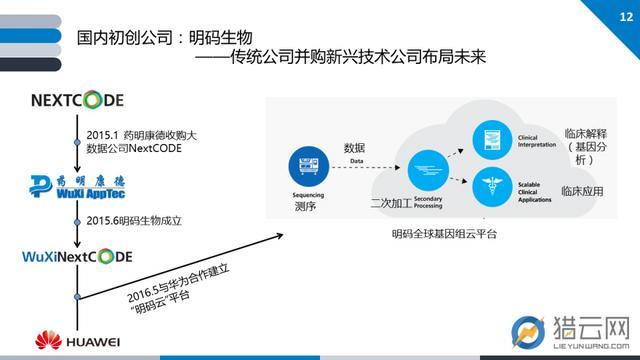
China's start-up companies have the most characteristic features of Mingji Technology in the field of drug development and the successful use of the public number for the 23 Rubik's Cube.
On September 8, Mingmao Technology received a $240 million B+ round of financing from Sequoia Capital. The company was founded by the pharmaceutical drug research and development outsourcing company, WuXi PharmaTech, after the acquisition of big data company. In the middle of last year, after the gene, the “Mingyun Cloud†precision medical cloud platform was released. The company is characterized by traditional companies expanding their business through mergers and acquisitions of emerging technology companies, and will have strong advantages in the field of drug research and development in the future.
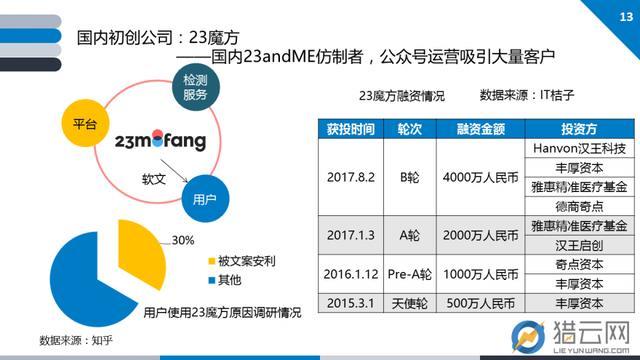
23 Rubik's Cube was established in March 2015. At present, the total financing amounted to 75 million yuan. The average time interval between the two rounds of financing was 7 months. The test samples accumulated 27,000 after one year of establishment. The results are more prominent among the start-up companies. In addition to some more accurate detection, the main help of 23 Rubik's Cube users is from promotion and marketing. The public number is 100,000+ soft texts. According to incomplete statistics, 30% of the 23 Rubik's Cube users use the product because they are attracted by the public text.


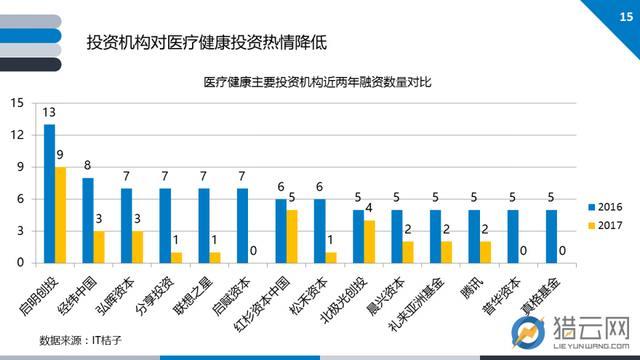
However, it seems that a good genetic technology industry has shown a slight decline in capital performance this year. As of the end of September, there were 193 financings in the medical and health sector in 2017, of which 15 were genetic tests, accounting for 7% of the total. In 2016, there were 45 financings in the genetic field, accounting for 14%. This year, the number of genetic testing financing and the proportion of the medical industry are not as good as last year.
The Hunting Cloud Research Institute analyzes the cooling of genetic testing for the following reasons:
1. Giant monopoly : At present, the total market share of Huada Gene and Beihe Ruikang is 85%, and the remaining market space is limited. The startups have limited detection.
2. Service homogenization has further compressed the market : the existing genetic testing company's business is concentrated in the field of prenatal screening and genetic disease testing, and the track is crowded.
3. Capital is more cautious : the amount of financing in 2017 decreased by 25% compared with the same period of last year, and the heat in the medical field also declined.
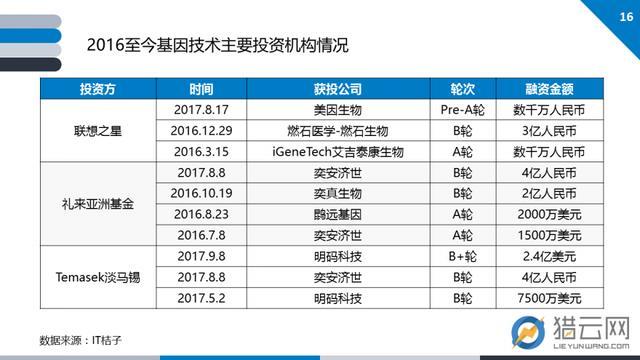
Since 2016, the top three investment institutions for genetic technology investment are Lenovo Star, Eli Lilly Asia Fund and Temasek Temasek. Temasek Temasek has invested in three genetic technology related companies this year, two of which have been awarded to Minghao Technology, a subsidiary of WuXi PharmaTech. The Eli Lilly Asia Fund’s investment in this area has declined this year compared to last year.
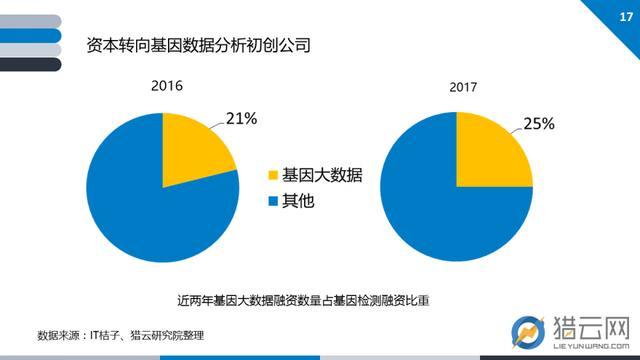
In this year's genetic testing, the gene big data analysis company accounted for 25%, and the proportion increased further than last year.
At the same time, traditional genetic testing companies such as Huada Gene, Boao Bio, and Daan Gene have also expanded into the field of big data. They have released a cloud platform for precision medicine, and they can also see BAT Ali. The trend of capital gaze from simple genetic testing services to genetic data analysis has become more apparent.
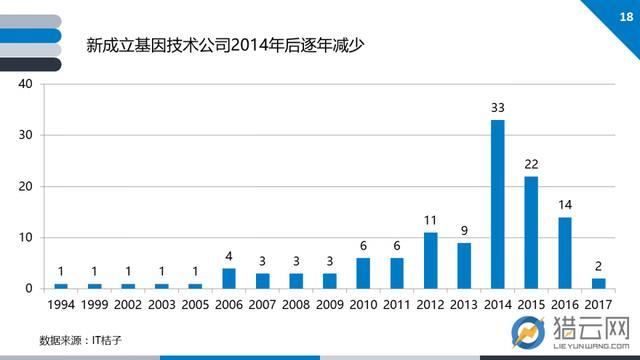
In the early days of the slow development of the genetic technology industry, the entrepreneurial craze was ushered in in 2014. In 2014, the number of startups in the field reached 33, and the number of subsequent establishments decreased year by year. Only two companies were established from the end of September to the end of September.

The Hunting Cloud Research Institute organized the financing of all genetic technology companies and found that the C round became the main watershed of genetic technology enterprises. 80% of the existing genetic technology companies have received financing, and 87% of the projects that have received financing have obtained early financing such as Pre-A, A and B rounds, and only 13% of the financing in the C round. .
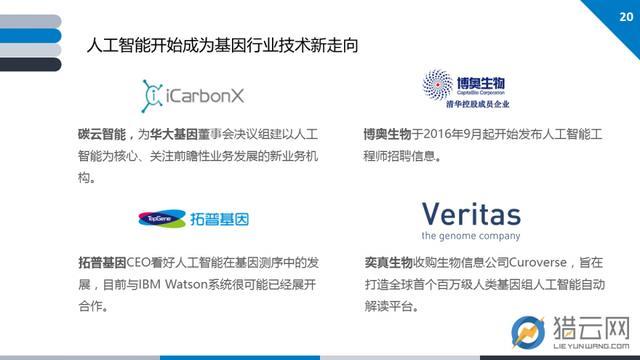
Existing genetic testing service providers have also deployed artificial intelligence. Domestic and foreign genetic testing experts believe that the deep learning function of artificial intelligence can reduce the difficulty of inferring genetic mutations and disease relationships in addition to the faster release of genetic testing reports. Conducive to accelerated genomics research and drug development.

The growing cautiousness of capital for genetic technology also means that the current field of genetic testing is not everywhere.
Downstream of genetic testing includes: demanders for prenatal screening, cancer genetic testing, pharmaceutical companies, hospitals, and research institutions. At present, the genetic testing services represented by NIPT account for more than half of the market, but the NIPT market Huada Gene and Berry and Kang have formed a monopoly. As a genetic testing leader, Huada represents the status quo of the entire industry to a certain extent.
According to the listing prospectus of Huada, the total profit of the complex disease service and scientific research service in the market is far from the reproductive health service. Hunting Cloud Research believes that with the increasing demand for accurate drug use for cancer, complex disease services including cancer genetic testing have greater profit margins.
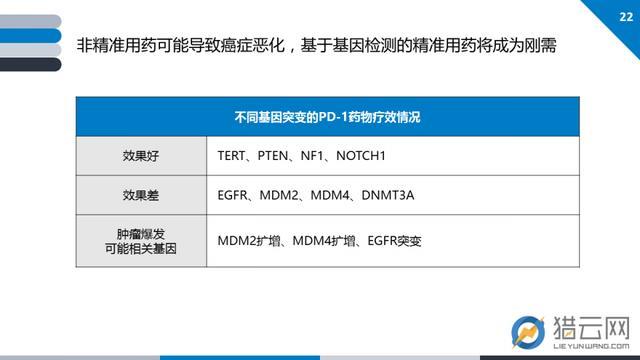
Personalized treatment is an important branch of genetic technology applications. Currently, personalized medicine includes precise detection based on genetic testing and personalized immunotherapy based on genetic modification technology.
In March of this year, several groups of clinical trial data showed that some patients with tumors deteriorated after treatment with PD-1 antibody, which is known as “anticancer drugâ€, and later they found similar MDM2 gene expansion by genetic analysis. Increased, although there is a small sample size, the lack of control comparison, but this discovery has also caused the industry's vigilance. If the conclusion is to be widely established in the future, the precise use of genetic testing may become a medically needed link.
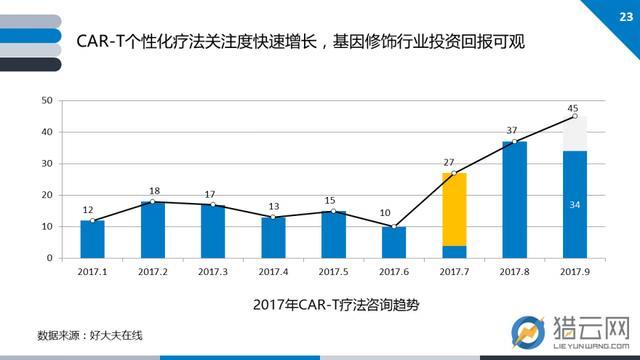
At present, the best results and market in personalized immunotherapy are cancer immunotherapy CAR-T, which has a good effect on B cell tumors (leukemia, lymphoma, etc.).
On July 13 this year, the approval of Novartis CAR-T therapy triggered a surge in domestic consultations. Good doctor online query "CAR-T" entry statistics from July 13 to September 19, the query volume increased linearly by nearly 25%. CAR-T therapy is currently priced at $475,000 and the global potential market is tens of billions of dollars. At present, only CART-19, CART-22 and CART-33 are approved in the research and development stage, and the return on investment is considerable.
At present, some research on some gene modification therapies in the field of solid tumors, geriatric diseases, rehabilitation, genetic diseases have also achieved certain effects, but the Hunting Cloud Research Institute believes that the application of these diseases is difficult due to problems such as pathophysiological difficulties and industrial chaos. Realization, and the possibility of future regulation will increase , and the application of genetic modification in medicine is still in its infancy.
This article reprinted from the hunting cloud network (micro signal: ilieyun), the original author Xu Mengqiao
Hair Growth Support Mints,Hair Growth Mints,Support Mints Hair Growth,Best Hair Growth Support Mints
Soar Biotech Co.,Ltd , https://www.xylitgum.com